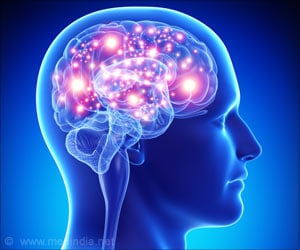Scientists have discovered that the dual n-back brain-training method improved working memory to a greater extent than the complex span method.
- Dual n-back method of brain training more effective in improving working memory than the complex span method.
- "Dual n-back" is a memory sequence test in which people must remember a constantly updating sequence of visual and auditory stimuli.
- The next step is to determine why this method of brain training is effective and how to improve the technique to make it marketable, says study.
TOP INSIGHT
Dual n-back exercise showed a 30 percent improvement in the working memory of people; the gains made by this method were nearly double the gains made by the group working with the complex span method.
Working Memory and Brain Training Methods
Working memory is responsible for temporarily holding of information available for processing. New information in working memory is temporary; it gets either gets stored in long-term memory or it decays and gets replaced. Unless it is actively rehearsed, new information in working memory has a short duration of around 10-15 seconds. Dual n-back method:The objective is to increase the number of items one can hold in mind at one time, known as your "working memory". The "dual n-back" is a memory sequence test in which people must remember a constantly updating sequence of visual and auditory stimuli. In this study participants saw squares flashing on a grid while hearing letters simultaneously. The test was to remember if the square they just saw and the letter they heard were both the same as one round back. The test was similar to the children's electronic game Simon, but instead of just recalling sounds and colors, the current sequence and the one a few rounds back had to be remembered.
Complex span method:
The "complex span" method also involves remembering items in a sequence but is relatively simpler than the dual n-back. There's a distraction for people between the displays of items, but they do not need to continually update the items in their mind.
Overview of the Study
Studies on cognition have had mixed luck while trying to determine if brain training exercises improved working memory. This particular study was aimed to prove that the idea of brain training was not the problem; it was the type of exercise different studies used to test working memory."People say cognitive training either works or doesn't work. We showed that it matters what kind of training you're doing," said lead author Kara J. Blacker.
The study directly compared the leading types of exercises to improve working memory and measure people's brain activity before and after training. Young adults were assembled into three groups of participants and asked to take an initial battery of cognitive tests to determine baseline working memory, attention and intelligence. An electroencephalogram (EEG)was also taken to measure brain activity. Then, everyone was sent home to practice a computer task for a month. One group used the dual n-back method brain exercise while the second group used the complex span method. The third group practiced on a control task.
The Results
The group that practiced the dual n-back exercise showed a 30 percent improvement in working memory that was nearly double the gains made by the group working with the complex span method. The dual n-back method practicing group also showed significant changes in brain activity in the prefrontal cortex, a region of the brain associated with higher learning.References:
- Johns Hopkins finds training exercise that boosts brain power - (https://www.eurekalert.org/pub_releases/2017-10/jhu-jhf101717.php)
- Blacker, K., Negoita, S., Ewen, J. & Courtney, S. N-back Versus Complex Span Working Memory Training. Journal of Cognitive Enhancement (2017). doi:10.1007/s41465-017-0044-1
 MEDINDIA
MEDINDIA





 Email
Email










